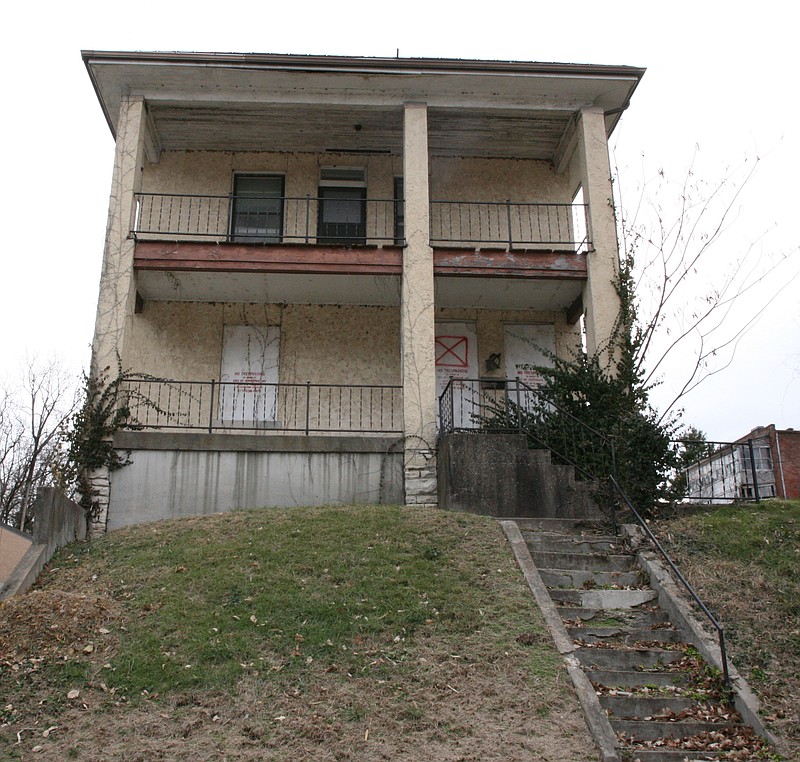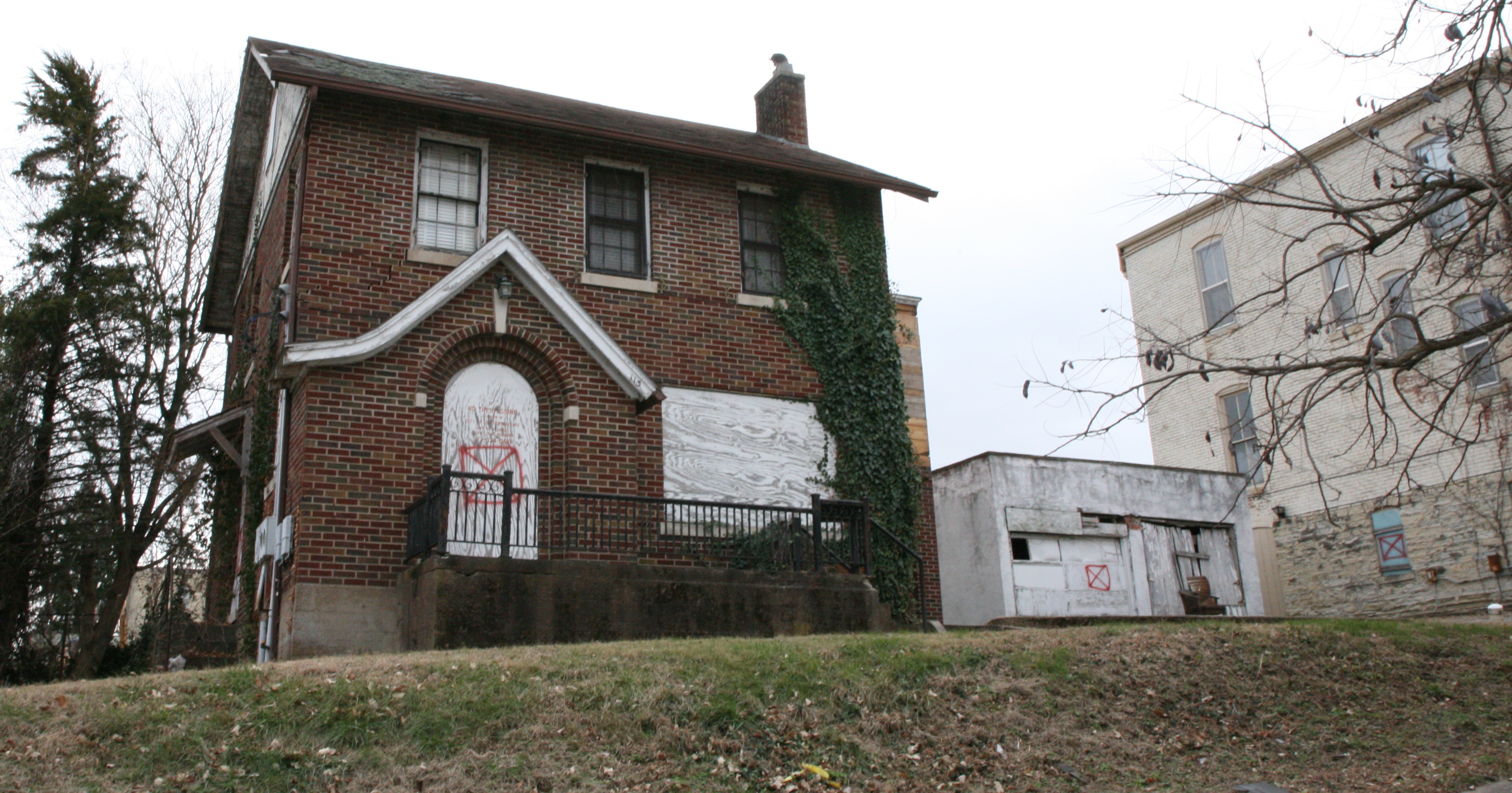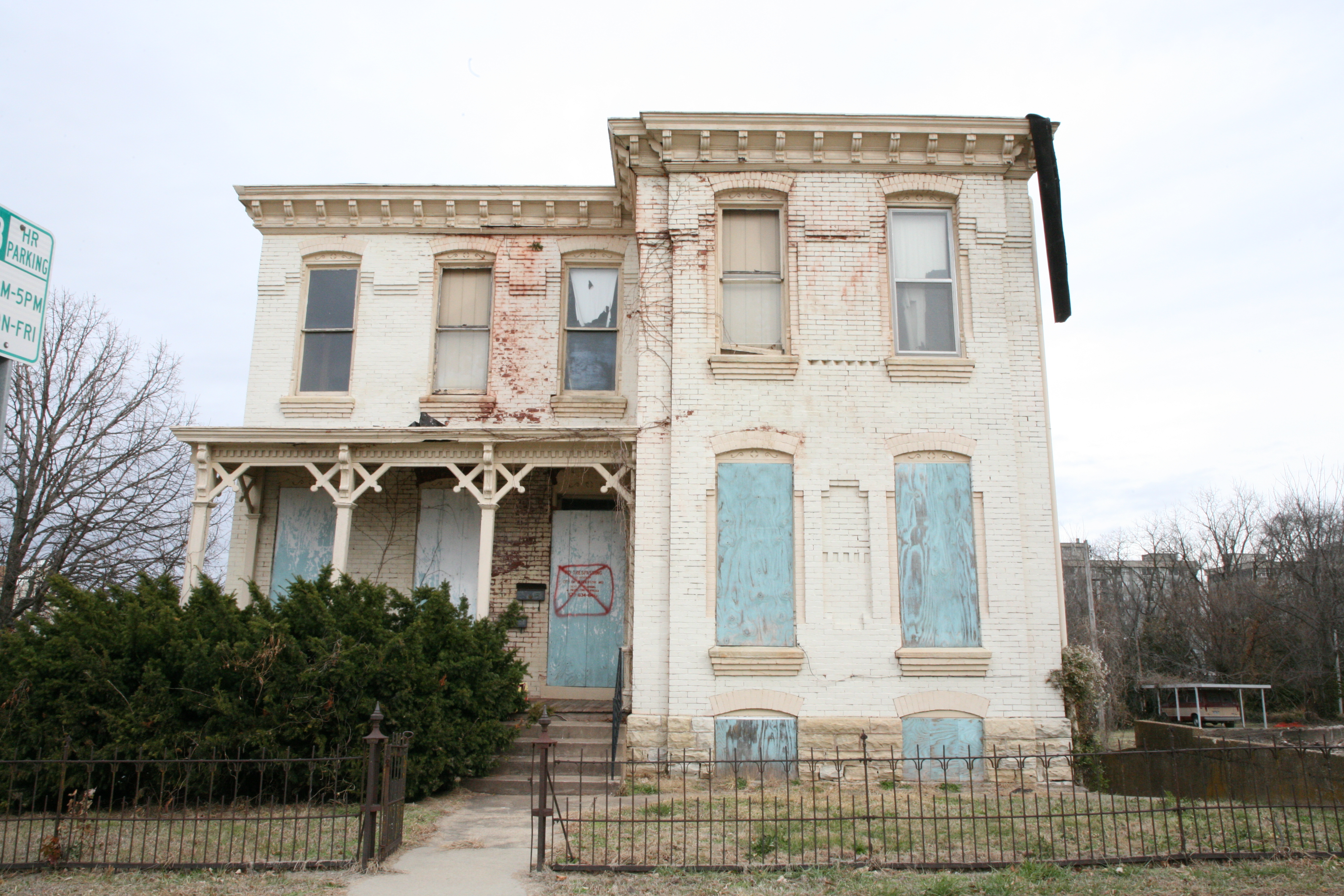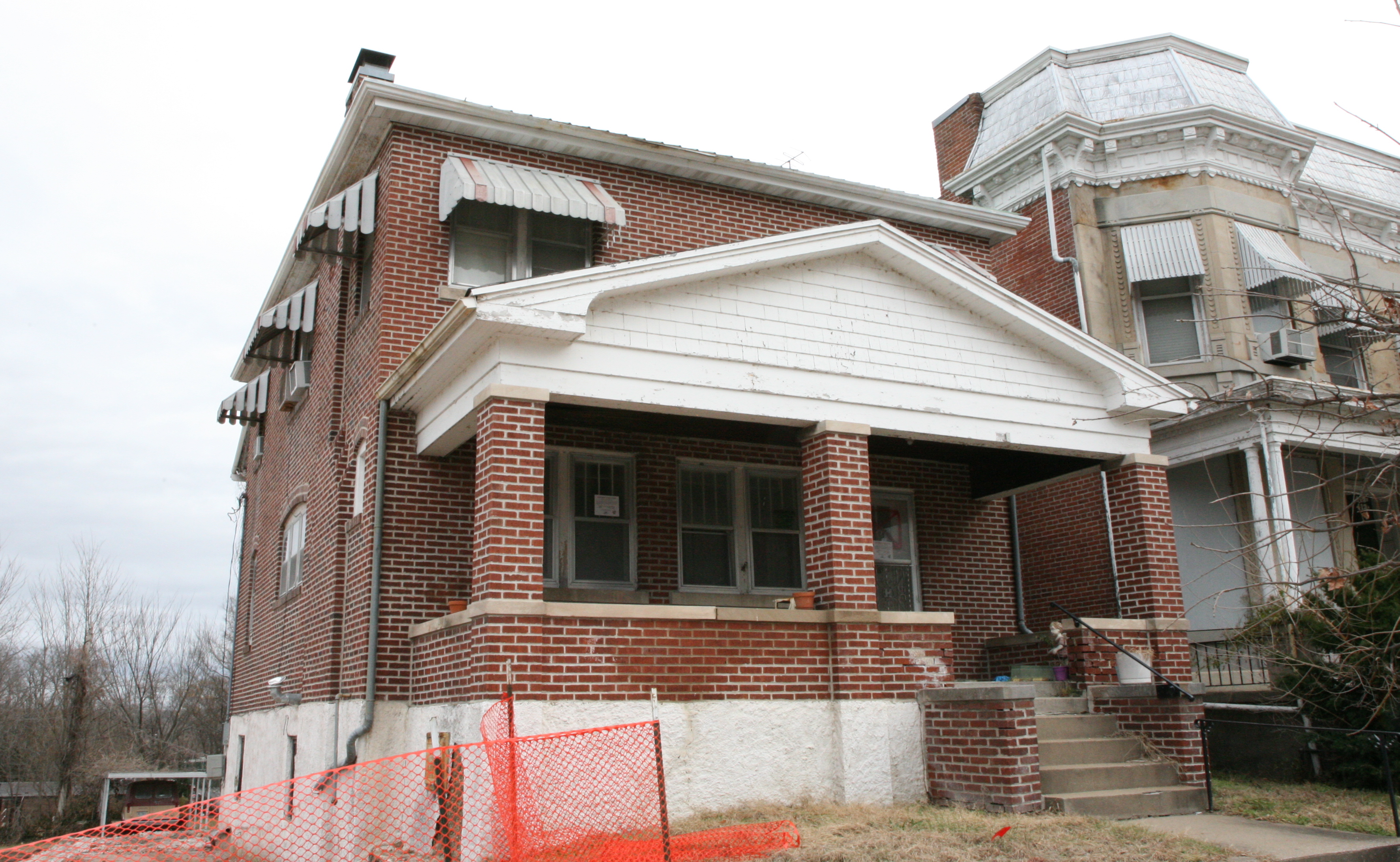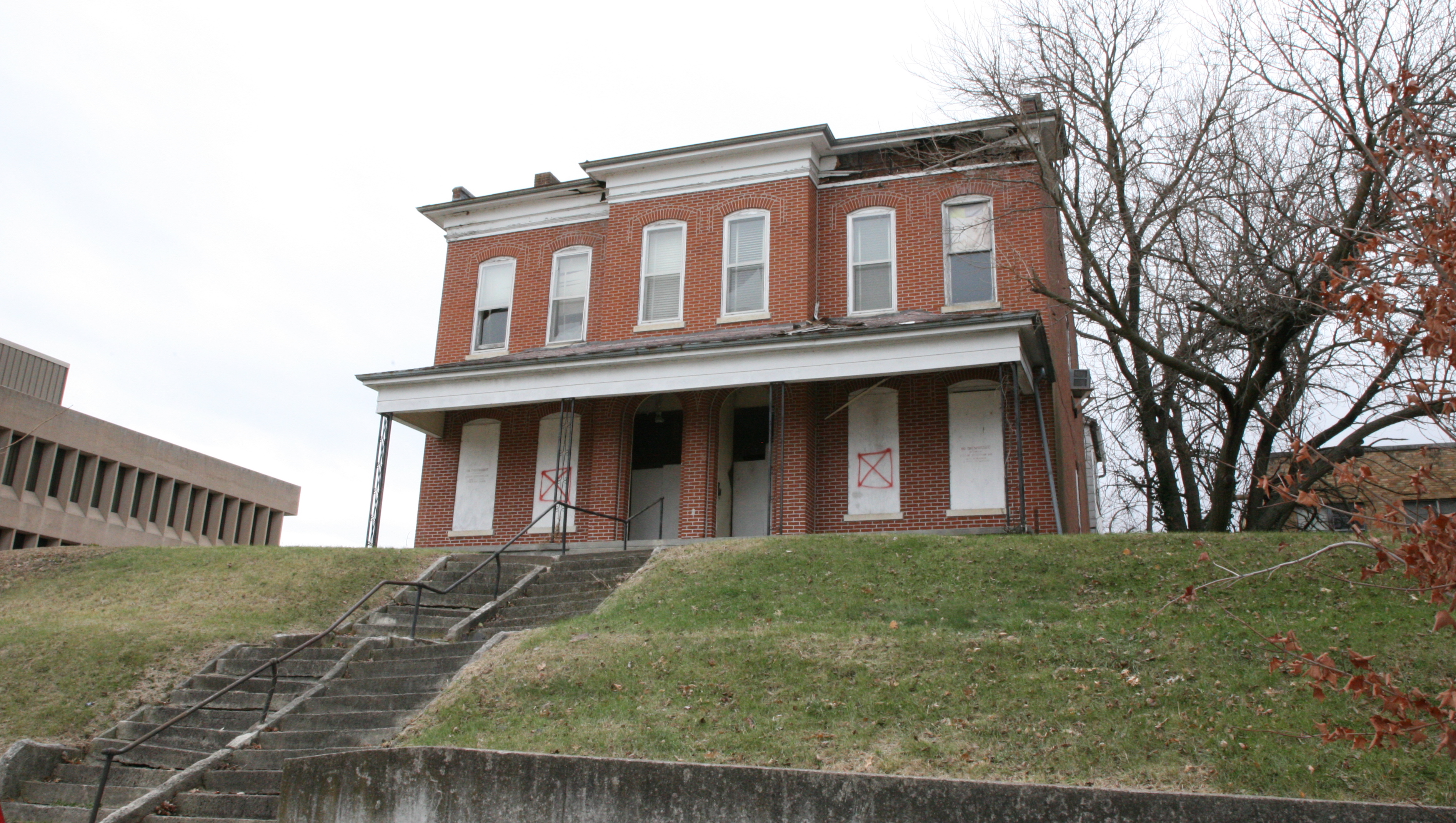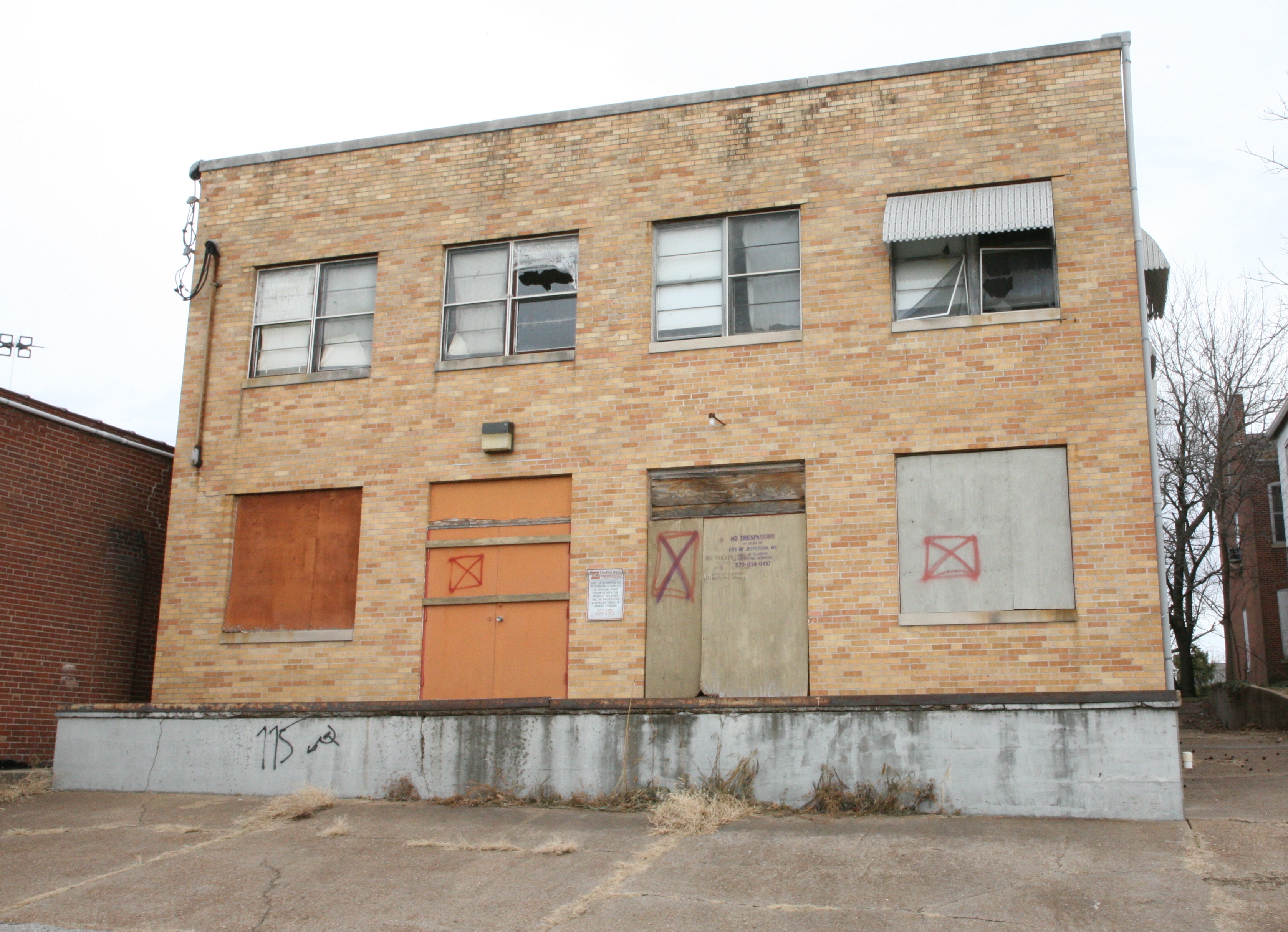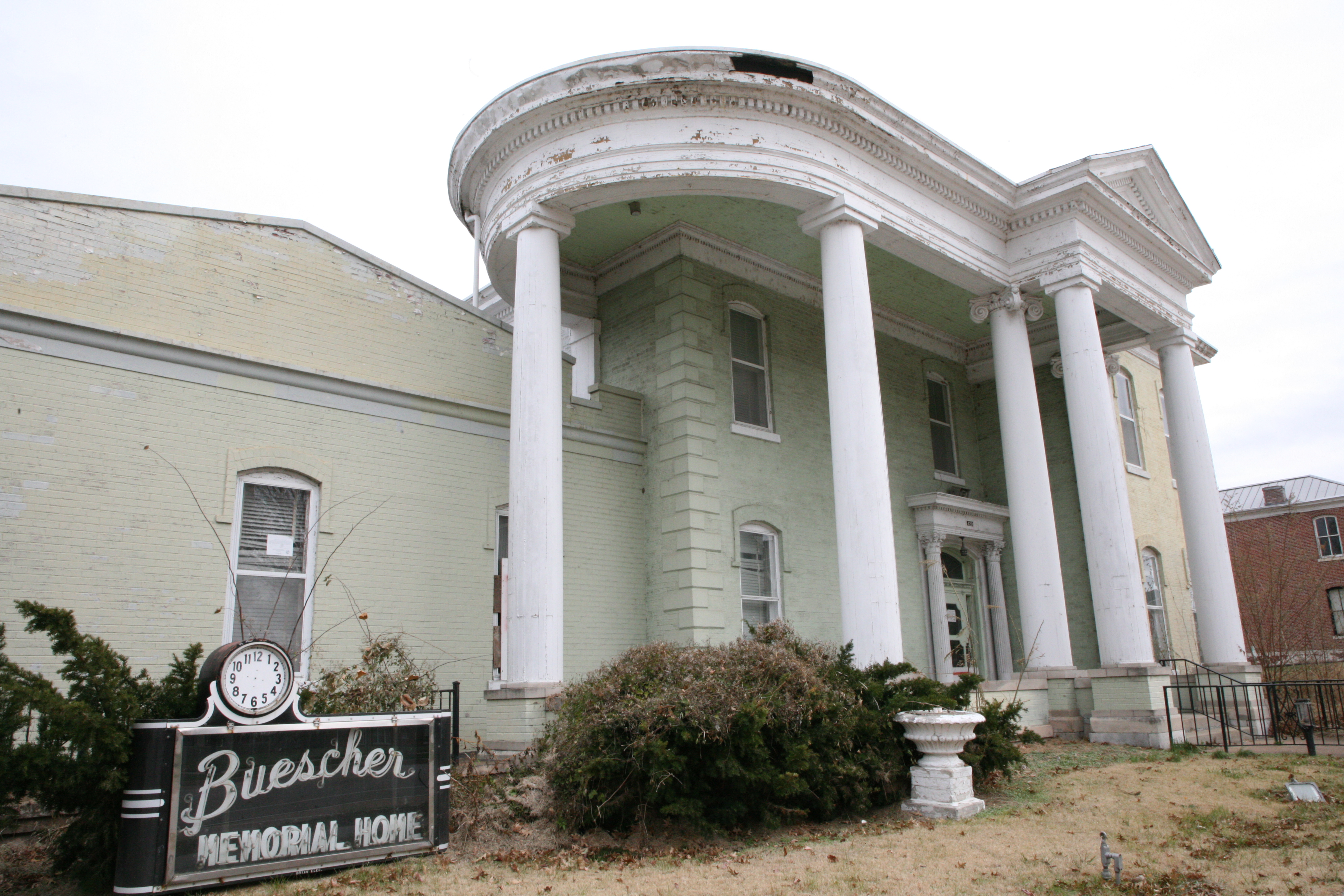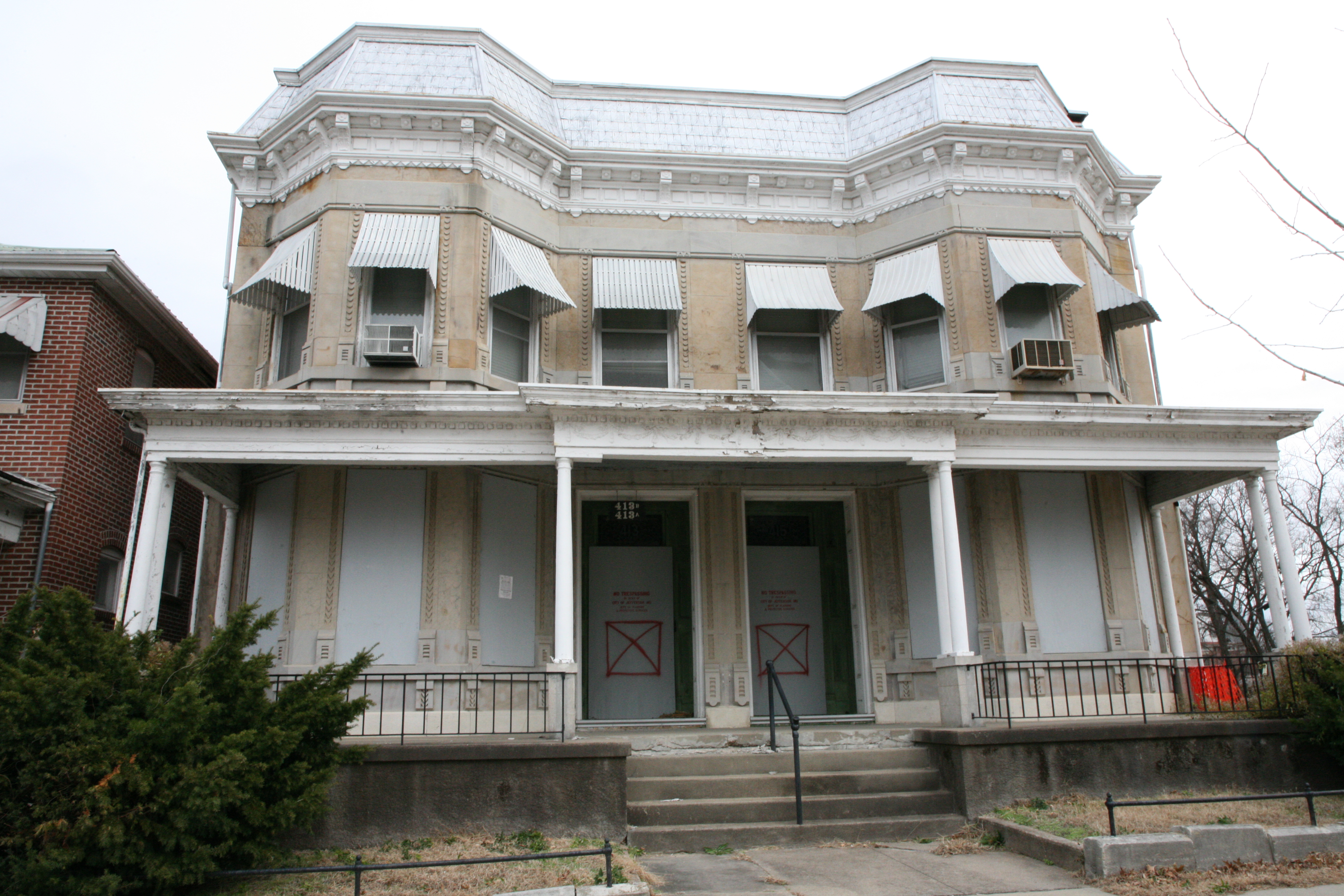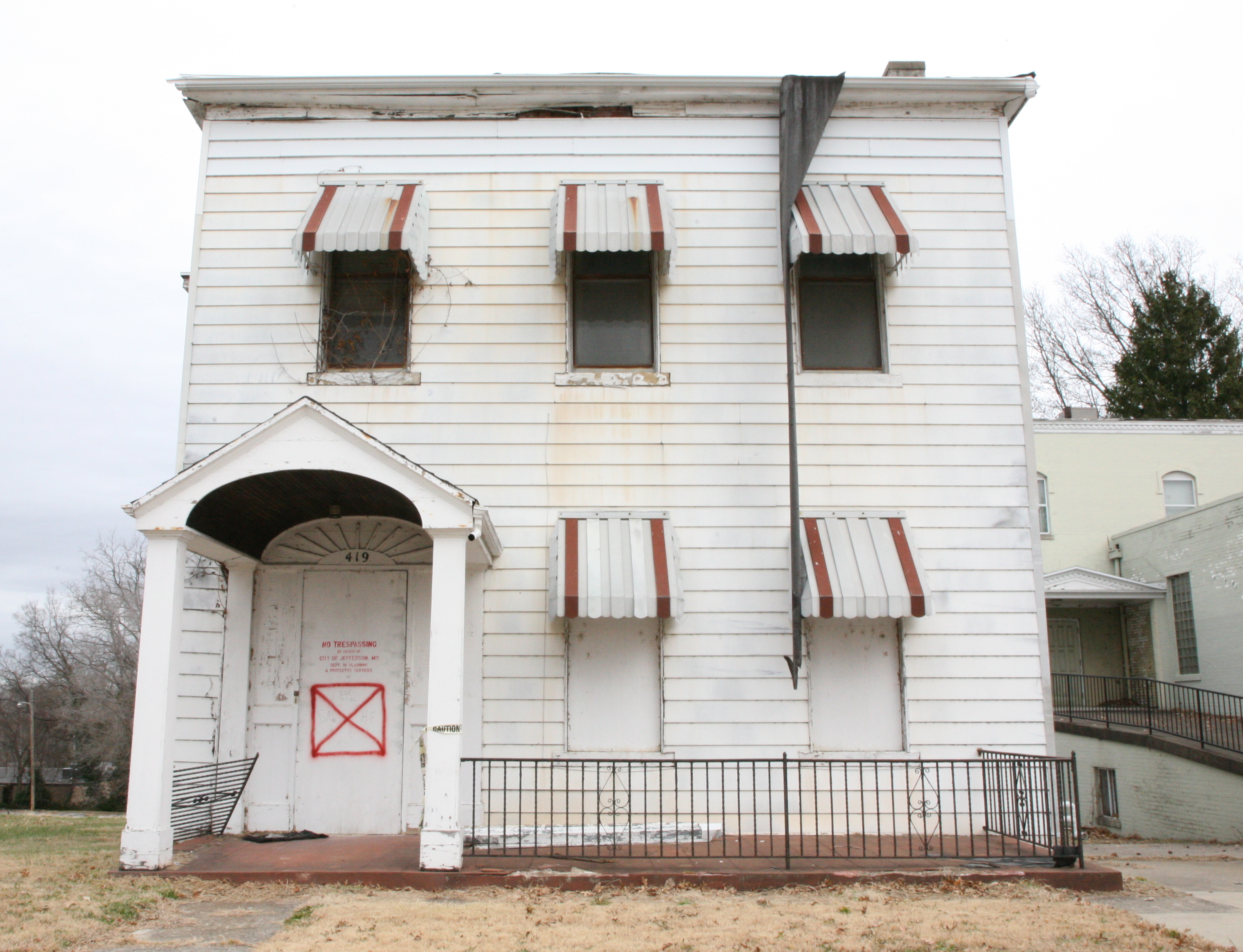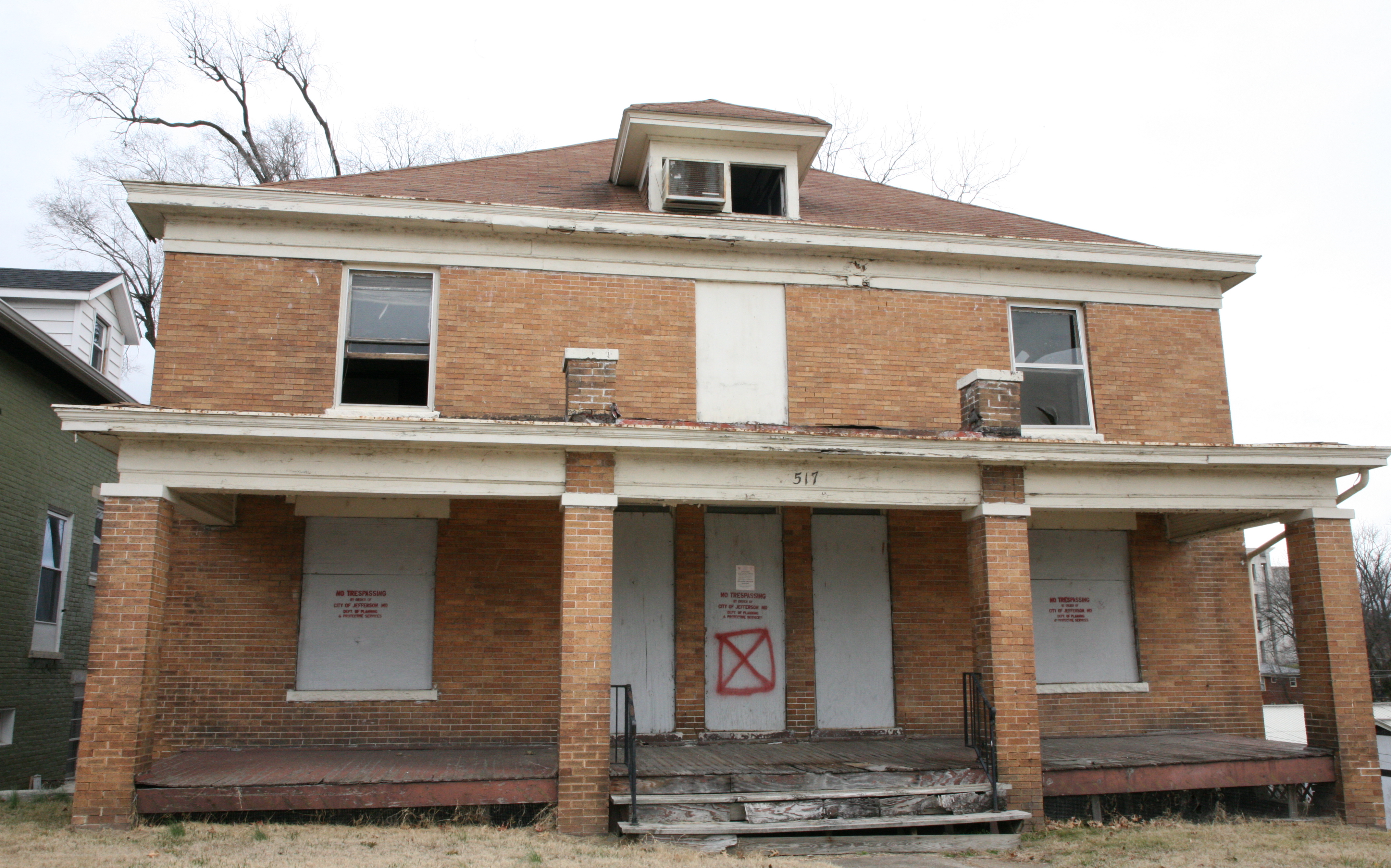A row of ornate homes in the Capitol Avenue historic district represent one of the first affluent neighborhoods to conceptualize in early Jefferson City.
Historian Gary Kremer wrote in "Exploring Historic Jefferson City" that this pocket of suburbia was one of the first to be directly connected to the city's center.
Many prominent political or business elites took residence there, and, as it is often recalled today, grew wealthy by profiting from prison labor at the state penitentiary, located across the street.
In 2005, the Capitol Avenue neighborhood was added to the National Register of Historic Places, officially becoming a historic district.
The district is bounded by 400-700 blocks of Capitol Avenue, the 100-200 blocks of Jefferson, Lafayette and Marshall streets, the 400 and 700 blocks of East High Street and the 200 block of Cherry Street.
Homes on Capitol Avenue, built sometime between 1830-1947, bear archaic features that present a wide variety of architectural styles, many the National Register recognizes as: Italianate, Queen Anne, Classical, Colonial, Gothic and Spanish Revival style buildings.
According to the National Register, when the application was accepted, there were 107 contributing structures and 12 non-contributing structures in the district. Some have been demolished due to abatement procedures from dangerous conditions.
Today, any passerby would notice sheets of plywood boarding windows on about a dozen of Capitol Avenue homes in the district, boards that also state "No trespassing." One might sense historical pertinence glancing upon the exterior facades, for they don't look like today's typical housing stock. One might also recognize many of these homes show signs of degradation, levels of cracking and a little more damage than basic wear-and-tear conditions.
Eleven have been long vacated and declared too dangerous to inhabit, a result that triggered the city's comprehensive development plan -- approved by the City Council -- for how to address Capitol Avenue blight.
City officials and local preservationists hope the structural antiquity of the historic homes may be spared through private redevelopment. And a process for seeking people interested in placing future redevelopment bids on eight of the properties is open now until Dec. 13.
The city is also accepting full redevelopment proposals for three properties it owns until Dec. 22. The city denoted certain criteria must be submitted in the proposal to qualify. The 10-elected council members will have the final approval on accepting bids once (and if) they are received.
The city hired consultants from Allstate to visually assess the interior and exterior conditions for each of the properties. Many expressed desire to see inside the structures before placing bids, however, the city noted the danger in entering any of premises and instead hired consultants to draft reports including photos and estimations for repair costs.
The eight homes involved in the "call for interested parties" process are not owned by the city, though the redevelopment plan regards a future effort to obtain ownership through an eminent domain lawsuit.
Cost estimates authored by consultants were determined using prices for builders' grade materials and only include repairs making homes livable.
Estimates do not factor costs for restoring buildings in any historical capacity.
Damages observed by Allstate consultants are summarized below, and consultants have said more damage may be prevalent than what is otherwise noted in their reports.
Open for 'call for interested parties' process due Dec. 13
109 Adams St.
The home was built sometime in the early 1900s. It is a two story residence with exterior walls covered in stucco. Assessors said the structure consists of "unreinforced, multi-wythe, brick masonry exterior walls, with wood-framed interior walls and floor/roof assemblies."
Some damage includes termite infestation, extensive moisture damage, a severely deteriorated roof and dangerous stairs located at the rear and front porches.
Assessed value: $19,700
Estimated cost to make safe: $169,456
113 Adams St.
The two stories located at 113 were built sometime around 1925. Hollow clay tiles covered in red-brick veneer comprise its exterior. It bears a gable roof with three-tab asphalt composition shingles, consultants said. Consultants said an addition covered with "fiber cement siding" is located at the west corner.
Damage includes several broken window panes, a large opening on the eastern roof slope, moisture infiltration in numerous locations, the presence of a large amount of waste and trash, and a deteriorated roof.
Allstate consultants said in an Oct. 17 council meeting the roof and upper-level level rooms appear to be extremely dangerous. The bathroom and kitchen fixtures have been vandalized.
Assessed value: $27,800
Estimated cost to make safe: $202,240
401 E. Capitol Ave.
Known by the name of a former resident, the Daniel H. McIntyre home was built in 1883. The multi-story, yellow brick home presents Italianate style popular from 1860-1880. Plenty of original details are visible in its single-story porch with wooden posts, narrow balustrade and decorative brackets. The Historic City Jefferson in 2016 wrote about 401's "embellished brand trim under a low-pitched roof with wide overhanging eaves."
Daniel McIntyre served as a Missouri attorney general and practiced law in the city. He later became the prosecuting attorney in Audrain County and eventually served in the state House and Senate. McIntyre served as a captain in the Confederate state guards and became a prisoner of war after being wounded at Wilson's Creek, according to the Historic City's special publication called "Capitol Avenue Historic District."
Allstate consultants said damage includes severely deteriorated walls, severe moisture infiltration, degradation, an aging and rusted metal roof, and the west walkway, front porch and east chimney appear to be specially dangerous areas.
Assessed value: $24,500
Estimated cost to make safe: $187,675
409 E. Capitol Ave.
Referred to as the Frank J. Edmonds home, 409 is a two-story brick house with a low-hipped roof built in 1925. On the 2005 National Register nomination, applicant Jane Beetem wrote: "While of more recent vintage than its neighbors, this house continues the pattern of the streetscape due to its height, scale, setback, and use of brick and 1-story front porch."
Consultants said damage includes severe moisture deterioration, a degraded and partially collapsed front porch, an unstable chimney, which may pose a falling hazard and fractured support beams observed in the main level. The home's plumbing, electrical and mechanical systems were not operational in all areas, an Allstate report indicated.
Assessed value: $38,300
Estimated cost to make safe: $213,000
410 E Capitol Ave.
National Register documents indicate 410 was likely built during the 1940s, but is missing on a 1939 Sanborn map. It is a two-story buff brick home, with a flat roof. Some windows are double horizontal-light metal windows that also alternate with single windows. A concrete staircase makes a pathway to the home; Allstate consultants said on Oct. 17 its repairs are not included in the 410's repair estimate.
Damage to 410 includes moisture infiltration, termite damage in the basement, damage to floor and ceiling joists, a partially collapsed brick chimney, several damaged windows and a degraded roof assembly at several locations.
Assessed value: $67,300
Estimated cost to make safe: $448,657
415 Commercial Way
The two-story commercial building is believed to be built sometime in the 1970s, Allstate consultants said, and comprises concrete masonry unit walls on slab-on-grade foundation.
The house is covered in a brick veneer exterior and has a "nearly flat roof covered with ethylene propylene diene monomer" or a synthetic rubber draining to scuppers at east and west parapets, according to Allstate reports.
It is the only building in the plan that is commercial in nature. Reports indicate damage includes several broken windows panes, moisture actively infiltrating parts of the roof and ceiling, a collapsed roof deck in some parts and vegetation growing on the north side of the building.
Assessed value: $83,500
Estimated cost to make safe: $309,701
114 Jackson St.
The multi-storied home located at 114 was believed to be built in 1920, according to Beetem's National Register application.
It is a variation of the American Foursquare style that includes Craftsman influences; the overhanging roof is accented by white painted fascia boards, Beetem wrote. The windows are evenly spaced on the second floor with concrete sills. The single-story porch sustains brick piers and brick balustrades.
Allstate consultants said damage includes missing gutters and downspouts, vegetation growth inside the home, sizable structural cracks, an exposed lower-level floor frame, a severely degraded roof, and long-term moisture exposure.
Assessed value: $56,600
Estimated cost to make safe: $349,678
429 E. Capitol Ave.
Painted light green with white trim, the Buescher Funeral Home today presents early 20th century Neoclassical features, with its grandiose, round front porch columns. The funeral home, which dates back as far as 1868, once presented an Italianate "L-plan" home before at least two additions were made sometime circa 1950s and 1980s. It operated as the Buescher Funeral Home starting in 1933. Beetem wrote the entrance features "a prominent door surround, with engaged Corinthian columns, a plain frieze and denticulated cornice."
The home bears the greatest rehab price tag of the 11 homes.
Damage includes, according to Allstate consultants, a severely deteriorated roof, long-term moisture damage and dangerous porch structures located east and south. Interior finishes were severely damaged from humidity and moisture infiltration and the electrical, plumbing and mechanical services do not operate.
Assessed value: $255,100
Estimated cost to make safe: About $1.15 million
Open for bids until Dec. 22
413 E. Capitol Ave.
Believed to be built in 1880, the apartment at 413 features styles from Second Empire, with a distinctive Mansard roof, which is also exemplified in the Governor's Mansion.
Its exterior facade is covered in limestone, according to the National Register nomination, with the remaining structure made of brick. Eight windows on the second floor have metal awnings, and on the first floor, eight tall windows have intricate details lining them. A two-story addition is located at the rear.
Allstate consultants said damage includes long-term moisture damage, a partially collapsed rear addition, degraded and partially collapsed brick masonry, and non-operational plumbing, electrical and mechanical services.
"Traversing the structure was dangerous," Allstate consultants said.
Assessed value: $43,700
Estimated cost to make safe: $557,006
419 E. Capitol Ave.
The home at 419 is covered in metal lap siding and exudes styles of the Side Hall Plan. Beteem wrote 419 maintains the rhythm of a block mostly made up of brick homes "through its size, height, roof shape, setback and use of a covered front entry."
The first and second-floor windows are shielded by metal awnings. On both the 1892 and 1898 Sanborn Maps, 419 was believed to be built in 1885, though without its front bay porch, which came later.
Allstate consultants concluded that 419's visible damage includes a severely deteriorated roof, moisture infiltration, an inaccessible basement, with dangerous stairs, severe damage to main and upper-level rooms and several deteriorated ceiling or flooring joists.
Assessed value: $20,100
Estimated cost to make safe: $300,598
517 E. Capitol Ave.
The home at 517 is described as a "buff brick," with a steep truncated hip roof that originally contained four residential flats, according to Beetem's National Register nomination.
Allstate consultants said damages include but are not limited to severe moisture infiltration, several damaged windows, a severely deteriorated roof and roofing drainage systems, non-operational electrical, plumbing and mechanical services.
Assessed value: $17,100
Estimated cost to make safe: $367,424

